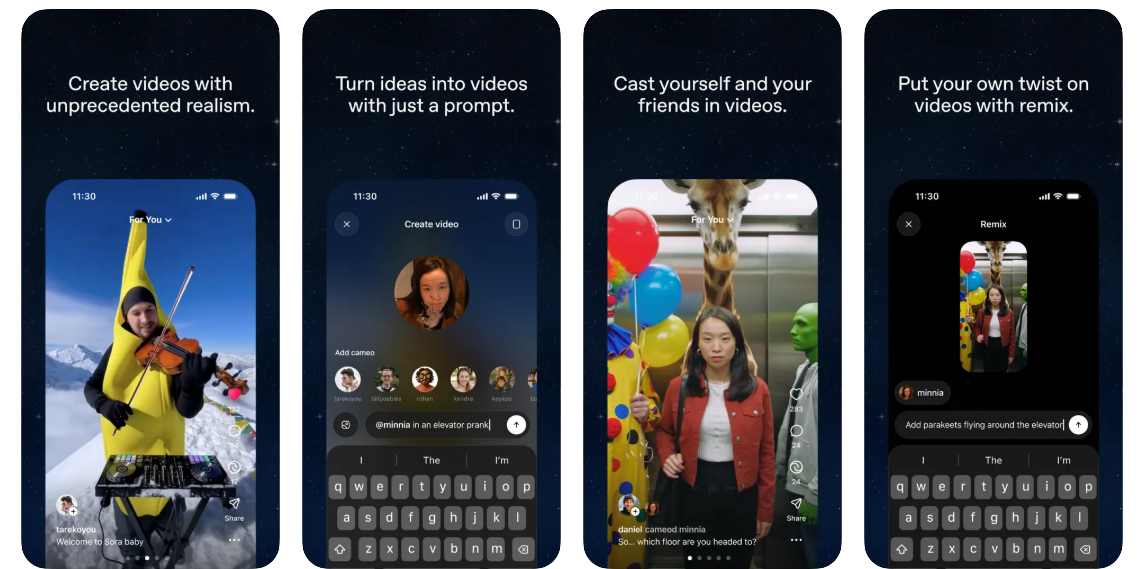OpenAI has unveiled Sora 2, its latest AI video generation model, alongside a new social app designed to bring AI-created videos to a wider audience. The iOS app, simply called “Sora,” introduces a vertical-scrolling feed similar to TikTok where users can create, discover, and share AI-generated videos.
The updated Sora 2 model represents a significant improvement over its predecessor released in February 2024. The technology now creates videos with synchronized dialogue, sound effects, and more realistic physics. Where previous AI video models might “teleport” objects unnaturally, Sora 2 better simulates real-world behaviors—like a basketball rebounding off a backboard rather than magically appearing in the hoop.
One of the app’s standout features is “Cameos,” which allows users to insert themselves into AI-generated videos after completing a one-time video and audio recording to verify their identity. Users can share their Cameo permission with friends, allowing others to include them in collaboratively created content.
“You can drop yourself straight into any Sora scene with remarkable fidelity,” OpenAI explains in its launch materials. The company reports that during internal testing, employees made new workplace connections through this feature.
To protect users, OpenAI has built several safety measures into the platform. Every video generated carries both visible watermarks and embedded C2PA metadata—an industry standard for digital content verification. Users have complete control over their Cameos, including the ability to revoke access at any time and delete any videos containing their likeness, even those still in draft form.
Similar Posts
The Sora app is currently available as an invite-only release in the United States and Canada. Initially free with “generous limits,” OpenAI states its only current monetization plan is to charge for creating extra videos during peak demand periods when computing resources are stretched thin.
For teens, the app includes additional safety features, including limitations on mature content and stronger privacy protections. New parental controls allow parents to manage direct messaging permissions and disable the algorithm-driven feed personalization.
The launch puts OpenAI in direct competition with recent offerings from tech giants. Last week, Meta introduced “Vibes,” a video feed in its Meta AI app dedicated to AI-generated content. Google has also integrated its latest video model, Veo 3, into YouTube.
OpenAI is making a higher-quality “Sora 2 Pro” available to ChatGPT Pro subscribers, with plans to eventually release an API for developers. The company says it designed the Sora app to prioritize creation over passive consumption, a departure from typical social media platforms that optimize for extended viewing times.
While users wait for invitations, they can download the app and join a waitlist. Once invited, users will receive friend passes to share with others, allowing groups of friends to join together.







